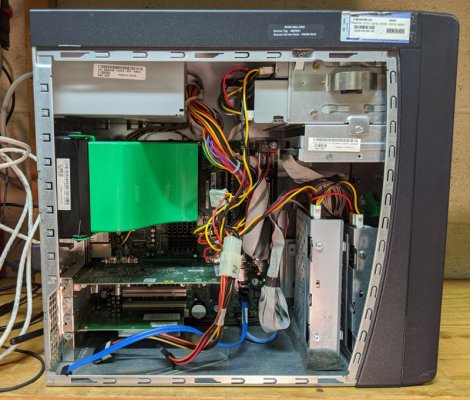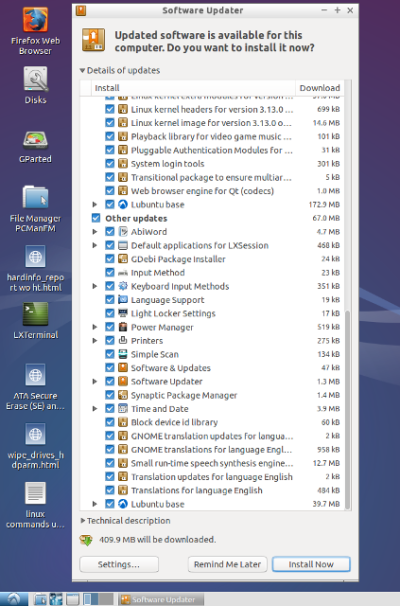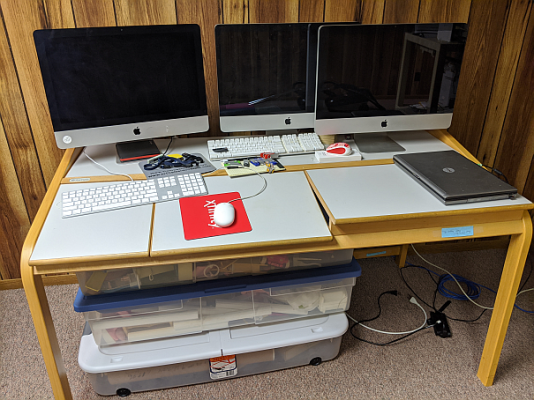target2019
Give me a museum and I'll fill it. (Picasso) Give me a forum ...
Old Uncle Lubuntu
Decided to take another cleaning run at the wine cellar. That's kind of a joke around here as there may be just a few bottles of wine. But there's always been a pretty large (at one time) collection of computers and associated repair parts.
Uncle Lubuntu is an old Dell Dimension 4600 (see below). I set up this reclamation project from a client with Lubuntu 14.04 LTS. That was back in December 2014, about the time of megacorp layoff #2.
Lubuntu (or lightweight Ubuntu) is described at https://en.wikipedia.org/wiki/Lubuntu
Without built-in wireless I had to re-run a Cat 5e I had removed last year. After an hour or so I booted and then updated to Ubuntu 14.04.6 LTS. Next stop will possibly be 16.04 LTS. Right now the desktop runs with LXDE, but I see that will change if I upgrade. I don't plan on doing much with this, except maybe look at spinning drives and diagnose problems. That's like fixing old wagon wheels...
Worth keeping are the “knowledge” notes and links I saved back in those days. Here's a couple of ATA secure erase articles.
https://ata.wiki.kernel.org/index.php/ATA_Secure_Erase
or
https://tinyapps.org/docs/wipe_drives_hdparm.html
Decided to take another cleaning run at the wine cellar. That's kind of a joke around here as there may be just a few bottles of wine. But there's always been a pretty large (at one time) collection of computers and associated repair parts.
Uncle Lubuntu is an old Dell Dimension 4600 (see below). I set up this reclamation project from a client with Lubuntu 14.04 LTS. That was back in December 2014, about the time of megacorp layoff #2.
- Intel(R) Pentium(R) 4 CPU 2.60GHz
- Memory 2063MB (433MB used)
- Release 14.04 -> Dec 2014
Lubuntu (or lightweight Ubuntu) is described at https://en.wikipedia.org/wiki/Lubuntu
Without built-in wireless I had to re-run a Cat 5e I had removed last year. After an hour or so I booted and then updated to Ubuntu 14.04.6 LTS. Next stop will possibly be 16.04 LTS. Right now the desktop runs with LXDE, but I see that will change if I upgrade. I don't plan on doing much with this, except maybe look at spinning drives and diagnose problems. That's like fixing old wagon wheels...
Worth keeping are the “knowledge” notes and links I saved back in those days. Here's a couple of ATA secure erase articles.
https://ata.wiki.kernel.org/index.php/ATA_Secure_Erase
or
https://tinyapps.org/docs/wipe_drives_hdparm.html



